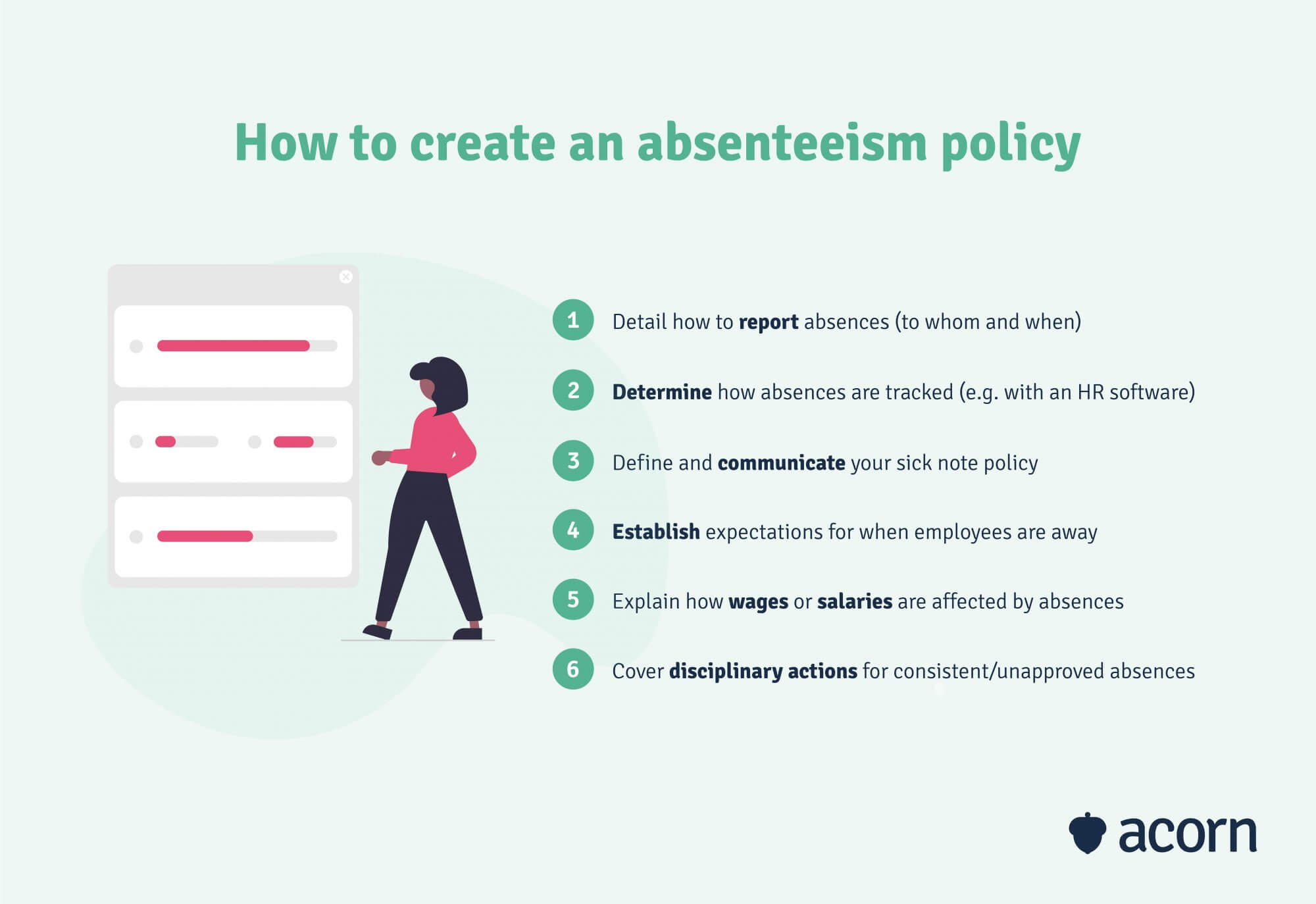Strategies & Best Practices to Reduce Your Employee Absence Rate
Reading Time:

Lead the pack with the latest in strategic L&D every month— straight to your inbox.
SubscribeAbsence rates give you insight into employee engagement, job structures and cultural issues that impact productivity and morale.
In any organisation, there’ll be an expected number of days employees are absent throughout the year. School holidays, public holidays, sick leave, and even “pawternity” leave all contribute to the employee absenteeism rate in your workforce.
Reducing absenteeism isn’t just about identifying and trying to account for a sudden unplanned absence. You need to take a deeper look into the potential cultural, workload and personal issues that affect employees’ willingness or ability to show up to work.
Read on to learn how to calculate your absence rate, the factors that affect it, challenges you may face while measuring absenteeism and best practices to get on top of it.
What is absence rate?
Absence rate, also known as absenteeism rate or absence percentage, is a metric used to measure the rate of unplanned absences from work due to sickness or other reasons.
Absence rate can be used by employers to assess an individual or workforce’s rate of absence from work across a given period of time. Said time period is dependent on outcomes. In our experience, we’ve seen different outcomes for a monthly or annual absenteeism rate formula.
4 reasons absence rates are important to business
Whether you’re looking at partial absences (where full-time employees need to drop to part-time work for a period of time, even if it’s just a day), unexcused absences (i.e. leave without a manager’s approval) or the occasional sickness absence (which needs to explanation), it’s important to understand rates of absenteeism.
There are generally four reasons why it’s important.
- Cost management. Excessive absenteeism may incur additional costs for organisations, like overtime pay or temporary worker fees. Managing absenteeism rates may also help HR proactively spot patterns that can be easily addressed, which could save resources in the long run.
- Productivity. Each day that someone’s absent from work is a day of delays to tasks and projects. Assuming that not all people can catch up on missed work within a single workday, an absence rate can highlight areas where production is suffering—giving you the foundation from which to take action.
- Morale. If an absence rate continues to ride high in a team or department, it may be an indicator that employee morale or engagement is low.
- Compliance. Some organisations may be required by law to keep track of employee non-attendance in particular sectors. Tracking absence rates to ensure compliance with legislation kind of goes without saying.
All in all, look at it as a way of understanding the strength of your culture, the volume of work for employees, unnecessary spending or poor resourcing, and general levels of employee engagement.
The key job roles that benefit from tracking absence rates
As an HR metric, it stands to reason only HR should have access to a calculated absence rate. HR personnel are often in charge of monitoring and mitigating employee non-attendance, given that data is used to spot patterns, evaluate lost production, and create policies and procedures to cut down on absences.
But there are actually a few roles that should be making use of your absence rate.
- Managers and supervisors must be aware of employee non-attendance on their team to manage impacts to the teams’ workflow and productivity. Absenteeism rates can help team leaders make long-term resourcing and recruitment decisions, too.
- To determine the financial impact of employee non-attendance, your finance team might need to analyse data on absence rates. Especially when it comes to budgets and forecasting, a certain absence rate may offer insight into the cost of overtime, hiring temporary workers, or general lost productivity.
- If you have them, OH&S experts may be able to spot potential dangers to employee health or safety in the workplace through absence rates. High rates of absences from work-related illnesses or injuries are usually a sign processes, procedures or tools need to be re-evaluated.

The counter-argument to tracking absenteeism
A single metric alone cannot tell the full workforce story. At face value, one percentage isn’t going to solve the issues behind the absence rate.
One legitimate justification given for opposing tracking absence rates is that it might foster a culture of suspicion and vigilance at work. If employees feel their absences are being watched and analysed—by peers or managers—morale can drop even further.
In saying that, an argument can be made that absence rates aren’t a reliable measure of employee engagement or performance. There may be legitimate explanations for why workers need time off (like illness or unforeseen personal circumstances) which shouldn’t be penalised or shamed, least of all to preserve culture.
But by concentrating solely on absence rates, it may be that you ignore other factors (workload, management techniques, workplace culture, lack of career progression) that might affect employee engagement and productivity.
Optimising those other areas can help turn the tide on engagement, and down the line, absenteeism. We created the performance learning management system (PLMS) to counteract the broken nature of corporate learning, and give organisations a strong EVP to offer employees. It’s the only solution that guides learners step-by-step to master the capabilities of their job roles in order to enhance their performance, and therefore your organisation’s.
But we digress. In short, don’t rely on absence rates as a source of truth. Consider it against other metrics like turnover rates, employee engagement, and revenue per employee.
How to track absenteeism rate
In simple terms, you divide the total number of days missed by employees by the total number of workdays in a given period to calculate absence rate. Multiply the result by 100 to show employee absence data as a percentage.

Another way is to use a team absenteeism rate formula that divides the team’s total unexcused absences in the specified time frame by the total number of employees, then multiplies it by the total number of workdays.
Other methods include:
- Attendance trackers and time tracking software can be used to monitor unauthorised breaks and clock-out times, though we recommend being careful with how use them and how transparent you are about it.
- Manual tracking. This entails keeping a paper or spreadsheet log of staff absences, usually done by managers and provided to HR. Regular updates to the records can be utilised to compute absence rates. For smaller firms or teams, this approach might be appropriate.
- HR information systems (HRIS) to keep track of employee non-attendance. The system can be configured to determine absence rates and automatically record absences.
Whatever the method, it’s critical to make sure that employee privacy is respected and that the tracking process is open to employees’ questions and concerns.
In order to also avoid any potential bias or discrimination, make sure that any data acquired is used in a fair and consistent manner.
Why tracking employee non-attendance is more challenging than you think
While a simple metric, tracking employee absence can be challenging at times.
And since it’s an important task to help employers manage employee benefits like sick leave and overtime wages, understanding the reasons for that challenge may help you avoid potential pitfalls.
Reason 1: Data accuracy
Accurate information on employee non-attendance, which can be difficult to get, is needed to track absence rates.
If you rely on manual tracking, for example, managers could overlook reporting absences for their team, or there might be inconsistencies between the reported absence and the time off that was actually taken.
Reason 2: Privacy concerns
Monitoring employee absenteeism may give rise to privacy issues. Employees could feel awkward about having their absences tracked (at best) and find cause to complain to external bodies (at worst).
Be transparent about the reasons for collecting this data, and make sure that any information gathered is securely stored, only used for legal purposes, and kept private.
Reason 3: Bias and discrimination
Bias and discrimination may be present when tracking absence rates, particularly if you don’t take reasons for absence into account. Employees who take time off for family obligations, for instance, could be punished in comparison to those who need to miss work due to illness. Keep in mind that not all employees will feel comfortable explaining personal or health reasons for absence, either.
Reason 4: Legal compliance
On the other side of the privacy concern coin is ensuring you’re in line with all applicable legal guidelines when keeping track of employee non-attendance. Some countries have unique regulations on sick leave and other sorts of vacation time, which is something to keep in mind if your workforce is distributed globally.
Reason 5: Technology limitations
Some organisations may not be able to use technology to track absence rates, given fewer resources to spend. It may also be that the software you use for time tracking is siloed from other systems, making it harder to collate and analyse data.
However, if you can use it, tracking software is the easiest way to ensure data is secure, accurate and complies with the duty you have to your employees.
For instance, some companies use time and attendance software that allows them to monitor non-attendance in real-time. Said software can also be integrated with other HR systems like payroll, making sick leave and the like much easier to manage.
Best practices for employee absence rate management
Look to industry innovations when it comes to managing the rate of absenteeism in your organisation.
Cloud-based software solutions are nifty choices for tracking employee absences, largely because they offer the advantage of being accessible, anytime, anywhere (given an internet connection).
That’s pretty important if you’re managing a dispersed and/or remote workforce, and even more so if managers don’t physically work with their teams every day. It also makes it easier to integrate said data with other HR systems, such as payroll and your HRIS, and provide more comprehensive reporting on employee absences.
AI and machine learning are somewhat adjacent to cloud solutions, and at the centre of the zeitgeist at the moment. With the right software, AI can automate analysis of absence data and flag patterns and trends with little manual input. This comes in most handy for forecasting; it may even help you predict when absences are likely to occur (beyond the usual school holidays) and giving you time to prepare.
Hand-in-hand with AI and cloud software are mobile apps. Think of emerging tech giants like Xero and SAP—they’re offering apps that allow employees to request time off, report absences, and check their schedules from their phones.
Some organisations are even experimenting with wearable tech trackers to track monitor employee health and wellness. This one toes the line between creative and potentially unethical, but given employee consent, fitness data could be used to identify potential health risks and take steps to prevent absences.
Key takeaways
Tracking absences is a crucial part of managing personnel in any company. It allows employers to identify how much time people are taking from work and why, and to take actions to address any issues that may be harming productivity and engagement.
There are numerous ways to monitor absence rates, including manager reporting, time and attendance software, HR information systems, and manual tracking. Each comes with its pros and cons, the latter of which includes data accuracy issues, privacy issues, bias and discrimination, regulatory compliance issues, and technological constraints.
The former, however, offers technological innovations that make it easier to collect, collate and analyse absence rate data.
Keep in mind one absence rate can’t tell you the whole picture of productivity and engagement in your workforce. It’s part of a larger swathe of metrics HR should be using to deliver more effective and meaningful strategies for their organisation.